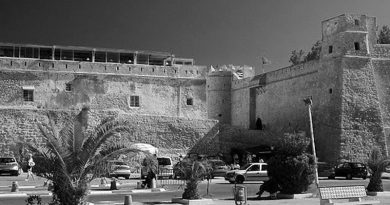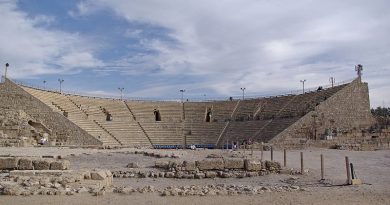The Battle of Gettysburg
Prior to 1861, the United States of America “were” known as separate states that created most of their own rules and regulations. An ongoing debate argued whether to have each state or a singular central government decide issues such as taxation, commerce of products and, in particular, the issue of slavery. The northern states opposed slavery while the southern states, whose economy depended on it, supported the institution.
So, in 1861, realizing debate could no longer resolve the dissension and division, the southern states seceded from the government and formed their own Confederacy of States. They even elected their own president, Jefferson Davis. President Lincoln, who was then president of the United States, believed “a house divided can not stand.” Thus, a Civil War, where brother fought against brother, broke out to decide whether the United States would remain one country or split into two.
In 1861 and 1862, Confederate armies achieved many victories over their Northern counterparts. By the summer of 1863, the brilliant General Robert E. Lee was in command of the Army of Northern Virginia. He decided upon an invasion of the north, which would pull both armies from war torn northern Virginia, where most of the fighting had previously been. By invading the north and particularly, winning a victory in the north, it might cause disenchanted northerners to pressure the Lincoln administration to seek a settlement toward peace, thus ending the war. This decision eventually brought the war to the doorsteps of a small, rural south central Pennsylvania town called Gettysburg
General Lee’s Army of Northern Virginia, 75,000 strong, was traveling north to central Pennsylvania. On June 30, Lee learned that the 95,000 men of the Union Army of the Potomac, led by Maj. General George G. Meade, were pursuing them.
July 1, 1863
Lee ordered several brigades to travel east to check their location and to forage for supplies for his troops. Northwest of the town of Gettysburg they met. A skirmish ensued and as the battle heated, word was sent back to both commanders that the enemy was found and reinforcement troops proceeded to the area. Over the next 2 days Lee’s army converged onto Gettysburg from the west and north while Meade’s army arrived from the south and southeast. Thus a battle never planned occurred simply by circumstance.
As southern forces continued a relentless attack against the entrenched Union troops, the additional arriving Confederate forces launched an all-out offensive which drove the Union forces through the streets of Gettysburg to a defensive line south of town. Thus, after the first day of battle the 5 mile Confederate line traveled from Seminary Ridge on the west side of the town of Gettysburg, through the town and eastward toward the area called Culps Hill. As additional Northern reinforcements arrived on the field, they occupied a 2 mile defensive position commonly referred to as a fishhook formation along Cemetery Ridge and Culps Hill
July 2, 1863
The second day of battle was initiated by a series of uncoordinated and fragmented Confederate attacks on the Union defensive position south of the town. While simultaneous attacks were supposed to have occurred on Culps Hill and Cemetery Ridge, the attacks took place six hours apart and were unsuccessful. Though Union forces held onto Culps Hill, the Confederate forces did drive back the Union troops in areas referred to as the Peach Orchard, Wheatfield, Valley of Death and Devils Den with a staggering amount of casualties. The Confederate advance of the right flank had initially succeeded but was stopped by heroic efforts of Union forces in an area known as Little Round Top.
Having been basically successful in 2 days of battle with the Union army, General Lee, believing his army was invincible and undefeatable, decided to attack what he thought to be the weakest position of the Union line the next day. At the same time General Meade held a council of war with his Corp commanders and decided to remain in a defensive position for the battle anticipated the next day. Thus the decision made by both commanders would lead to one of the most famous days of the American Civil War.
July 3, 1863
The third day of battle began with another unsuccessful attempt to take over and occupy Culps Hill. Meanwhile, a mile east of Gettysburg a Confederate Cavalry of 6,000 troopers held orders to attack the Union rear. Union cavalry with a strength of 5,000 confronted them in a hot firefight that contained and turned the Confederates back. General Jeb Stuart led the southern forces and among the Union leadership was General George Armstrong Custer.
Between the Union line on Cemetery Ridge and the Confederate outposts in the town, was the home of Mrs. McClellan with her new baby. Helping her with the child’s care were her mother and her unmarried sister, Jennie Wade. Throughout July 1 and 2 Jennie baked bread for grateful Union soldiers. On the morning of July 3rd, while Jennie stood in the kitchen kneading dough, a bullet pierced the door and struck her, killing her instantly. The cries of her sister and mother attracted Union soldiers who carried Jennie’s body to the cellar. Jennie was the only Gettysburg citizen killed in the battle.
At 1:00 p.m., the largest cannonade that ever occurred on the North American continent preceded the planned charge. Unknown to General Longstreet, in charge of the famous assault, the cannon fire, which was to decimate the Union center overshot their target and did nothing more than devastate farm fields far behind the Union troops.
When the cannonade ceased 12,000 Confederate soldiers marched from Seminary Ridge in parade dress formation to launch a famous, heroic attack upon the Union center, forever ingrained and immortalized in history as Picketts Charge. The Confederate objective was a small clump of trees, 1 mile away across an open field. Once the smoke from the cannonade cleared the field, Union forces watched their soon to be combatants in awe. They admired the intense patriotism and desperate dedication of the men before them. Still, once within range, the Union artillery hit and mowed down the columns of men like blades of grass. Two out of three Confederate soldiers would not return.
Incredibly, a small number of Confederate forces reached the small clump of trees in their brave determination and held the land for a brief period of time. Their courage and heroism gave way to the devastating realities of war as Union forces engulfed them from three sides. The group of trees became known as the High Water Mark of the Confederacy. Picketts division and other elements in the attack were virtually destroyed.
Retreating back to Seminary Ridge, General Lee waited and upon seeing General Pickett and realizing the defeat that occurred, advised Pickett to reform his division in the event of a Union counterattack. Pickett, looking at Lee responded, “General Lee, I have no division.” With these words, and after 3 days of devastating carnage, the battle ended with the Confederates being defeated and retreating back to Virginia the next day. Sadly, the horrors of the war would continue for another two long, bloody years.
The number of soldiers in the two opposing armies in the Battle of Gettysburg were (Union) 97,000 and (Confederate) 75,000. Lost were (Union) 23,000 and (Confederate) 28,000, but all were Americans.
As the two armies departed Gettysburg to continue the war elsewhere, the 2,000 citizens of Gettysburg came out of their cellars and back from their hurried escape to nearby towns. They returned to a community in shambles with almost every property damaged, houses looted, and all crops and food destroyed or stolen. Left behind were tens of thousands of casualties in and around the town. Nearly every house, barn and public building housed countless wounded badly needing attention. Many dead were left decaying where they fell, thousands of others were in shallow graves being dug up by animals. Lingering odors were sickening.
The carnage, destruction but untold heroic acts of valor of both Union and Confederate soldiers was immortalized in the history of mankind four and a half months later when President Lincoln delivered the famous speech known and recognized as “The Gettysburg Address.”
In 1938 another President came to Gettysburg to dedicate this historic battlefield. President Franklin D. Roosevelt dedicated the Eternal Light Peace Memorial as a monumental symbol of “Peace Eternal in a Nation United.”




